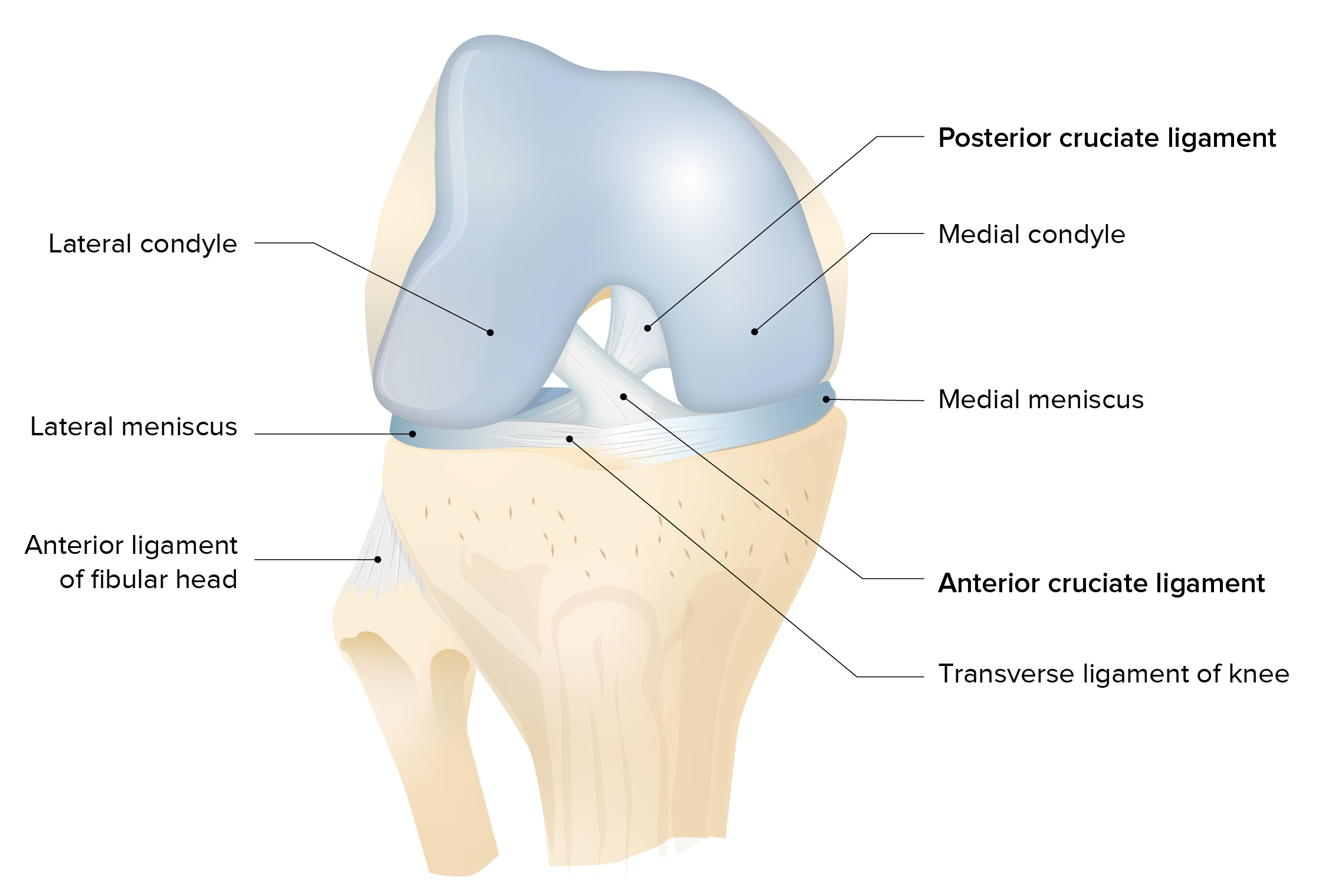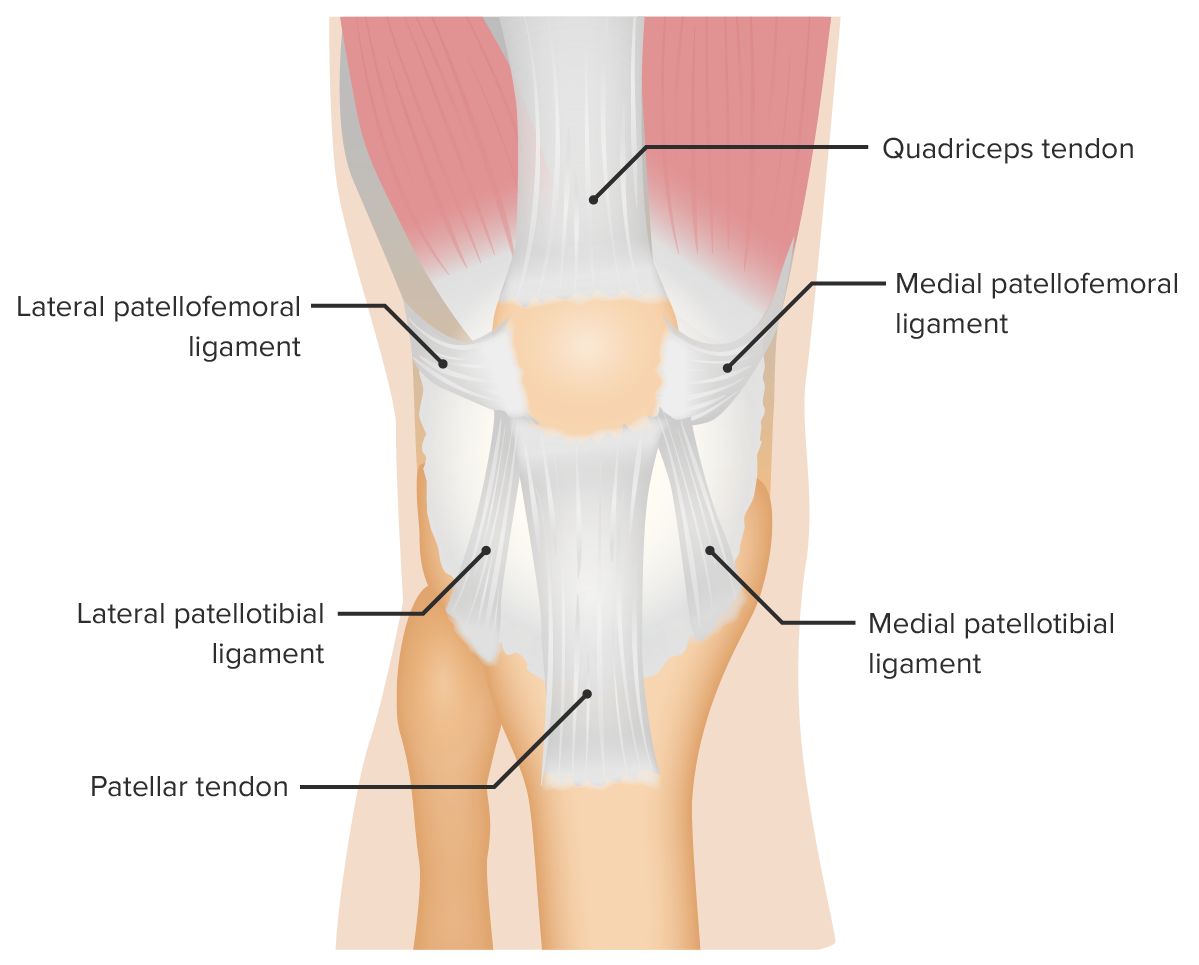A dislocation of the knee ( tibiofemoral joint Tibiofemoral joint Knee Joint: Anatomy) is a rare injury but is important to recognize because of limb-threatening trauma. Knee dislocations (KDs) are emergent cases that require immediate reduction and evaluation of the neurovascular system. Clinical presentation includes precedent trauma, obvious deformity Deformity Examination of the Upper Limbs, effusion, ecchymosis Ecchymosis Extravasation of blood into the skin, resulting in a nonelevated, rounded or irregular, blue or purplish patch, larger than a petechia. Orbital Fractures, and possible signs of vascular injury to the popliteal artery Popliteal Artery The continuation of the femoral artery coursing through the popliteal fossa; it divides into the anterior and posterior tibial arteries. Popliteal Fossa: Anatomy. Management includes reduction of the dislocation, serial examinations for arterial perfusion, imaging of the vascular system, and orthopedic and vascular consultations.
Last updated: Dec 5, 2022
A dislocation of the knee ( tibiofemoral joint Tibiofemoral joint Knee Joint: Anatomy) is a rare injury that is important to recognize due to the frequent association with vascular injury and associated risk of limb amputation Amputation An amputation is the separation of a portion of the limb or the entire limb from the body, along with the bone. Amputations are generally indicated for conditions that compromise the viability of the limb or promote the spread of a local process that could manifest systemically. Amputation. These are emergent cases that require immediate reduction and evaluation of the neurovascular system.
Knee dislocations (KDs) can be classified based on the position of the tibia Tibia The second longest bone of the skeleton. It is located on the medial side of the lower leg, articulating with the fibula laterally, the talus distally, and the femur proximally. Knee Joint: Anatomy in relation to the femur, etiology, or on the pattern of ligament tears (Schenck classification).
Classification based on the position of the tibia Tibia The second longest bone of the skeleton. It is located on the medial side of the lower leg, articulating with the fibula laterally, the talus distally, and the femur proximally. Knee Joint: Anatomy in relation to the femur:

The knee joint: bony structure and landmarks
Image by BioDigital, edited by LecturioClassification by etiology:
Schenck classification of KDs: based on pattern of ligament tears
Usually a high-energy mechanism of injury is required for multiple ligaments to fail in order for dislocation to occur.

Image displaying the menisci, ligaments, and bony surfaces and their relation to one another
Image by Lecturio. License: CC BY-NC-SA 4.0
Image displaying the menisci and their relation with other articular surfaces that compose the knee joint
Image by BioDigital, edited by Lecturio
Supporting ligaments of the patellofemoral joint
Image by Lecturio. License: CC BY-NC-SA 4.0
Posterior anatomy of the knee showing the relationship between the popliteal artery and the tibial and common fibular nerves
Image by BioDigital, edited by LecturioKnee dislocations are an uncommon injury but require emergent evaluation and management secondary to the possibility of limb ischemia Ischemia A hypoperfusion of the blood through an organ or tissue caused by a pathologic constriction or obstruction of its blood vessels, or an absence of blood circulation. Ischemic Cell Damage, which may require surgical intervention to avoid amputation Amputation An amputation is the separation of a portion of the limb or the entire limb from the body, along with the bone. Amputations are generally indicated for conditions that compromise the viability of the limb or promote the spread of a local process that could manifest systemically. Amputation.

Posterior knee dislocation: Note the obvious deformity as the leg is displaced downward due to gravity.
Image: “Neglected irreducible posterolateral knee dislocation” by Department of Orthopaedics, Postgraduate Institute of Medical Education and Research, Sector 12, Chandigarh – 160 012, India. License: CC BY 2.0The majority of complete KDs are clinically obvious with a history of significant trauma and gross deformity Deformity Examination of the Upper Limbs of the knee. Diagnosis is made clinically, although imaging studies may be indicated to confirm suspected vascular injury or fracture Fracture A fracture is a disruption of the cortex of any bone and periosteum and is commonly due to mechanical stress after an injury or accident. Open fractures due to trauma can be a medical emergency. Fractures are frequently associated with automobile accidents, workplace injuries, and trauma. Overview of Bone Fractures and/or for surgical planning.

Posterior knee dislocation seen on radiography before and after reduction with underlying knee osteoarthritis
Image: “Posterior knee dislocation on X-ray” by Department of Orthopaedics and Traumatology, Ankara Numune Training and Research Hospital, 06100 Ankara, Turkey. License: CC BY 3.0Closed reduction Closed Reduction Radial Head Subluxation (Nursemaid’s Elbow) of a KD KD An acute, febrile, mucocutaneous condition accompanied by swelling of cervical lymph nodes in infants and young children. The principal symptoms are fever, congestion of the ocular conjunctivae, reddening of the lips and oral cavity, protuberance of tongue papillae, and edema or erythema of the extremities. Kawasaki Disease should not be delayed, especially in a limb with obvious vascular impairment. As these injuries are often high-energy trauma, evaluation for other life-threatening injuries is essential.

Operative repair of an irreducible posterolateral knee dislocation
Image: “Peroperative photograph” by Indian Journal of Orthopaedics. License: CC BY 4.0